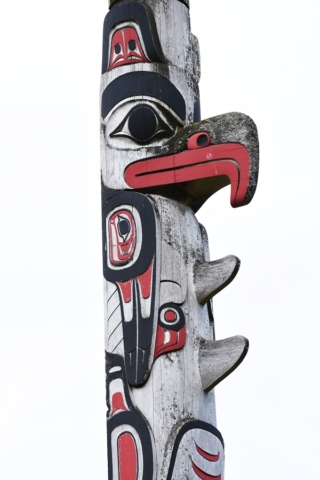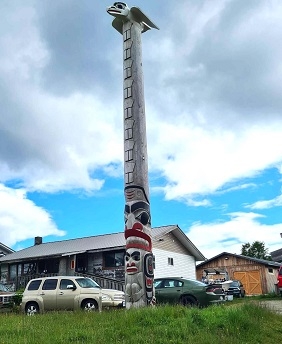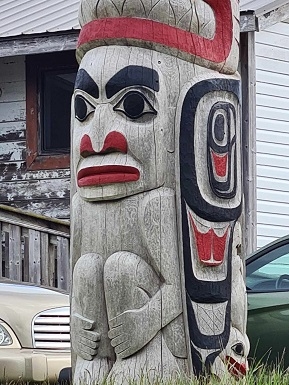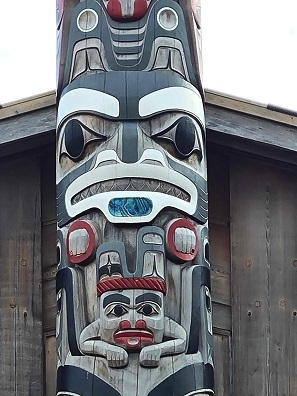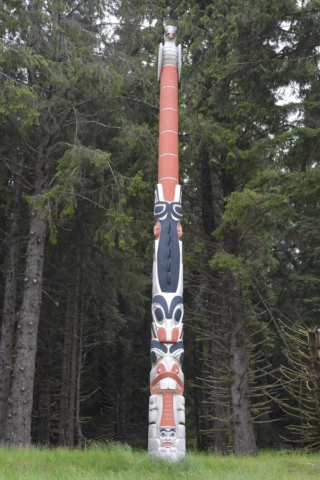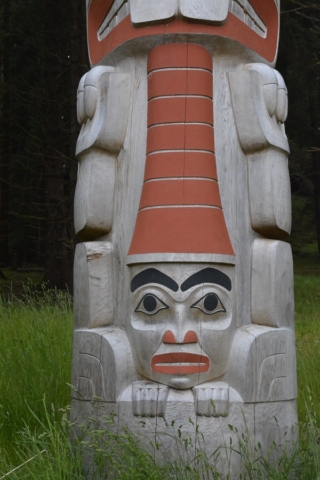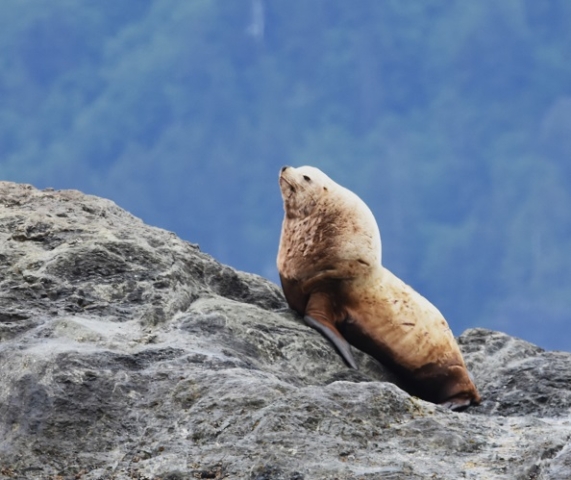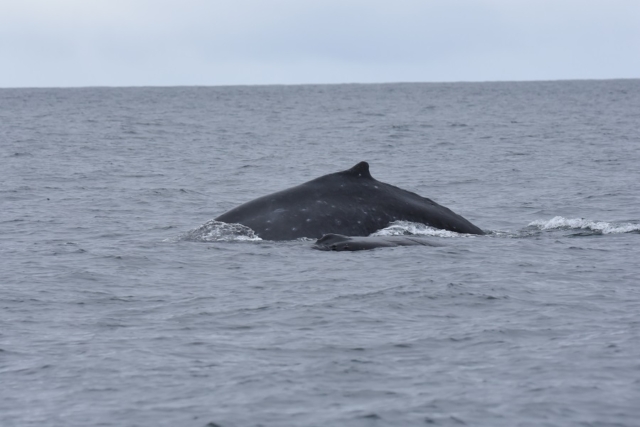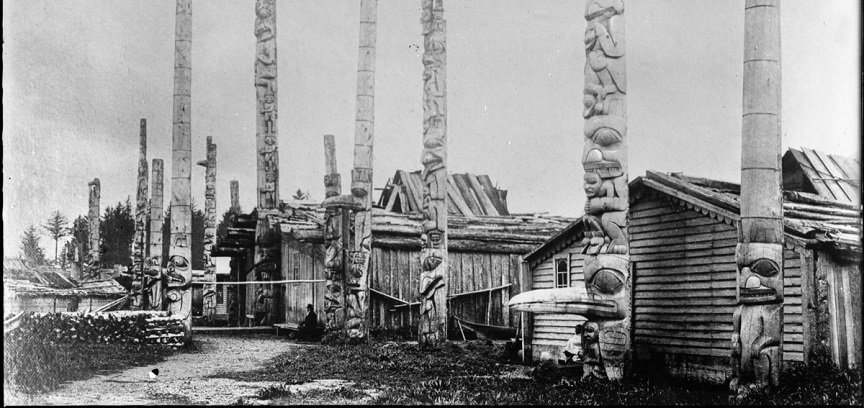
What is Haida Gwaii
Haida Gwaii is a remote island in Canada. Most Canadians would be hard-pressed to find it on a map, and many have never heard of it.
Where is Haida Gwaii
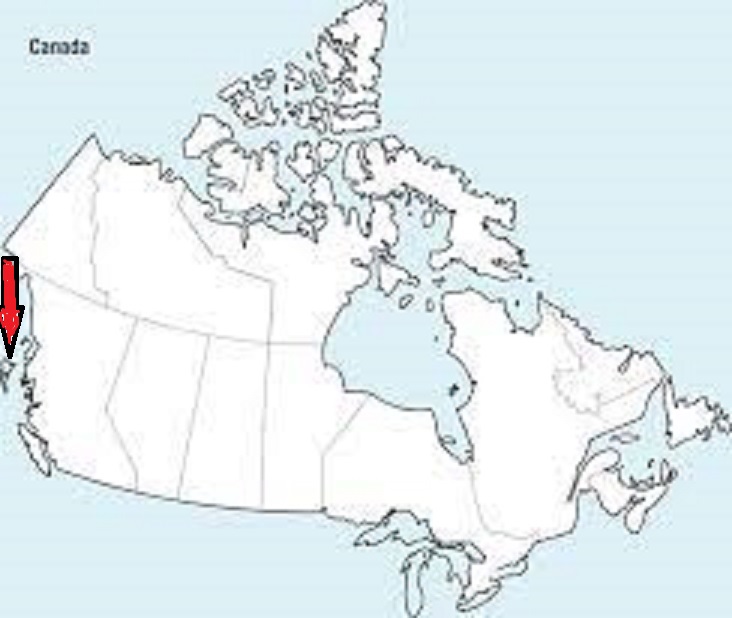
Haida Gwaii is an island in the Pacific Ocean off the west coast of Canada. From the north end of Haida Gwaii, you would be closer to an island in Alaska than the Canadian mainland.
How do I get there?
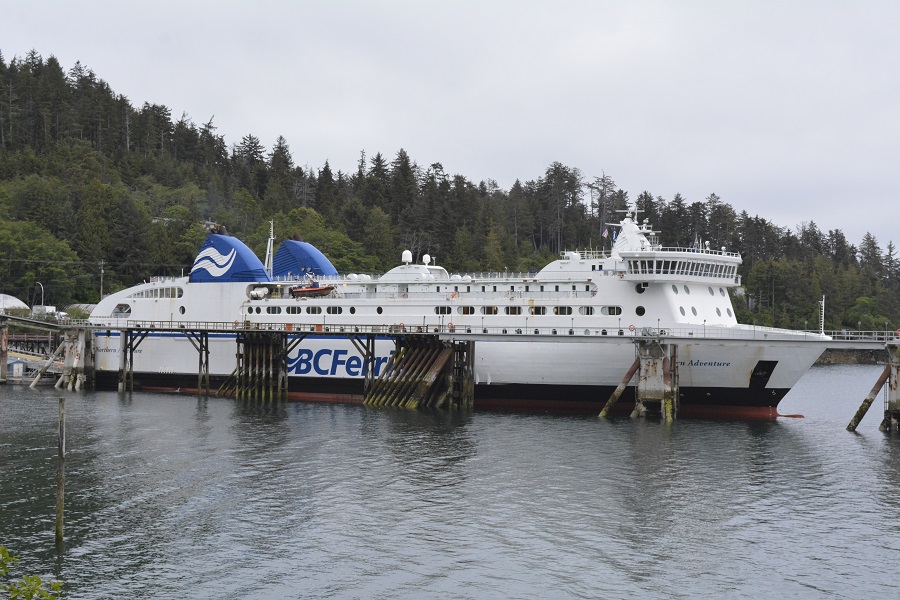
To get to Haida Gwaii, you must first travel to Price Rupert in the Canadian province of British Columbia. Then, you must take a seven-hour ferry ride from the west coast.
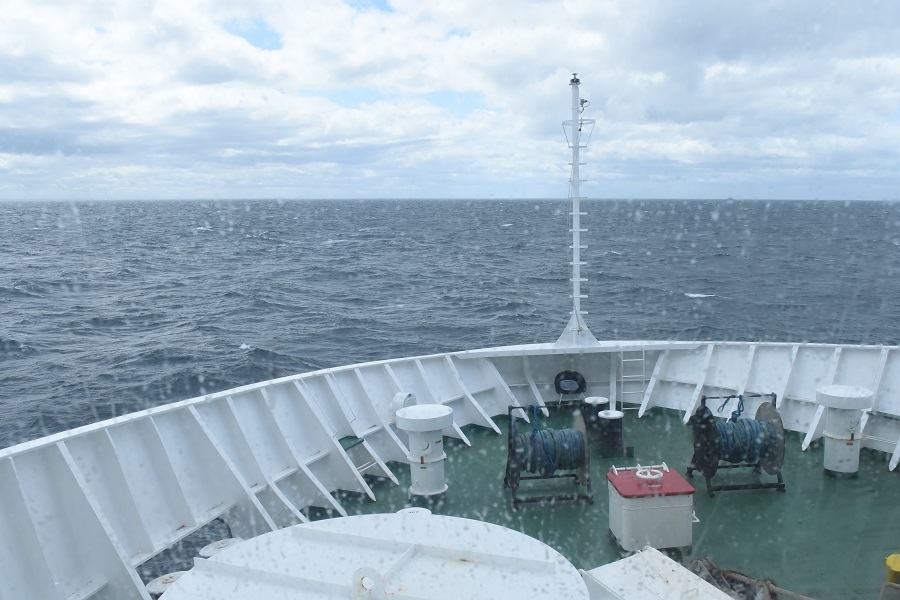
Heading west on the Pacific Ocean with no land in sight.
Why go to Haida Gwaii
There are several reasons to go to Haida Gwaii.
- To learn about the culture of the local indigenous people.
- To see an intact rainforest wilderness.
- To see birds such as puffins and jaegers.
In addition to the above, I went there because there are very few places in Canada that I have not seen.
No big chain stores such as Walmart, fast-food restaurants, or national banks exist. However, there are good restaurants of all categories, from takeout to fine dining. There is a credit union where you can withdraw cash, but making your purchases with a debit card is better than paying high fees to use an ATM. Bring a couple hundred in cash; you should not need to go to a bank. There is only one grocery store per town, and prices are high. They must pay $1.00 per kilo to bring food on the ferry. Also, it is common for the stores to run out of things. I went to the grocery store several times, and sometimes there was no milk, bananas, orange juice, or yoghurt.
The bad news is that it is very expensive, and getting there is also costly. Gasoline was $2.20 per litre in Skidegate and $2.40 further north. This is $1.00 per litre more than in Alberta and about 60 cents more than in mainland British Columbia. (Prices as of June 2024 and subject to change.)
The Culture
Haida Gwaii is the home of the indigenous Haida people, who have lived there for 13,000 years. They arrived there when the sea levels were much lower and Alaska was connected to Russia, and Haida Gwaii was connected to the Canadian mainland.

Before the arrival of Europeans, the indigenous people of the west coast of North America lived in large houses that contained an extended family. For example, a town with 1,000 people might live in 30 houses. Each family house had a totem pole, which depicted family heritage, culture, history, and beliefs.
Arrival of the Europeans
When the Europeans arrived, the priests told the people that totem poles were evil. They said you will not go to heaven if you have a totem pole. They should be cut down and burned. No new totem poles were made for more than 100 years. A few of the original totem poles still exist in remote, abandoned villages, but most were destroyed by people or the ravages of time. Many were moved to museums. The archaeological museum in Vancouver has many, and the museum in Skidegate has a few. Today, totem poles are once again being made and erected. They are made by hand without the use of power tools and erected by the whole town, pulling on ropes without the use of machinery. I travelled around the island of Haida Gwaii to photograph them. The photo above is a very old one of a village before the totems were destroyed or moved.
Today’s population is about 5,000, consisting of about 50% Haida and 50% Caucasian. Before the arrival of the Europeans in 1774, the population was about 30,000. The Europeans brought diseases, such as smallpox, typhoid, measles, and syphilis, to which the Haida had no resistance. By 1900, only 350 Haida remained. The small villages were abandoned, and the people moved into the two main towns of Masset and Skidegate.
Totem Poles
After more than 100 years, totem poles are again being made in Haida Gwaii. There are three types of totem poles.
- Family house-front poles, as shown and described above. These poles are one-sided, with the back and interior of the tree removed. The soft centre of the tree is the first to rot, and removing this makes the pole last much longer. I had always thought totem poles were round, like a telephone pole.
- Memorial Poles are totems dedicated to the memory of a famous or much-loved and admired person. Unlike the house-front poles, these poles are round. A lot of time goes into finding the perfect tree, usually a red cedar, that is perfectly straight and will last longer than other trees.
- Mortuary Poles have a shelf near the top that holds a box. Inside the box is the remains of a famous or much-honoured chief.
Old Totem Poles in the Forest
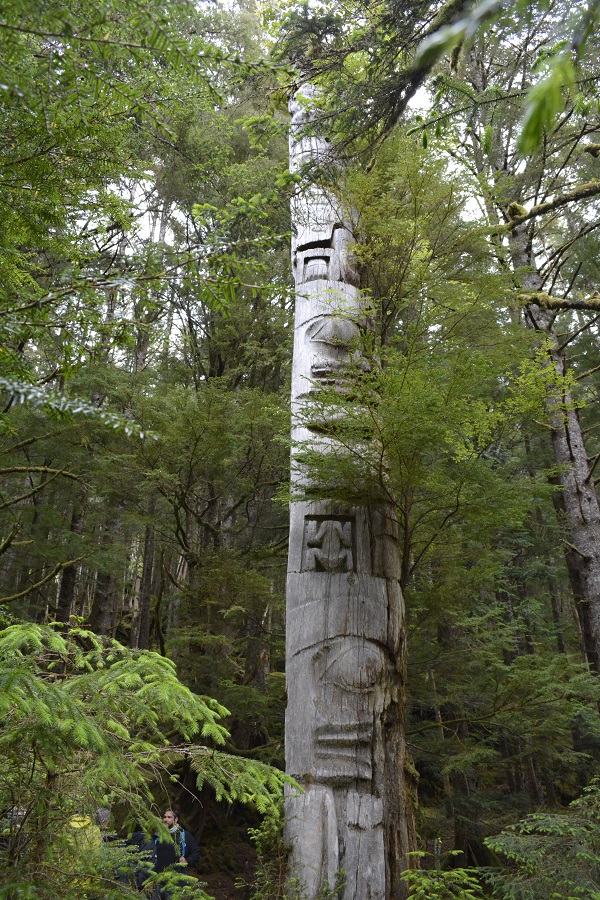
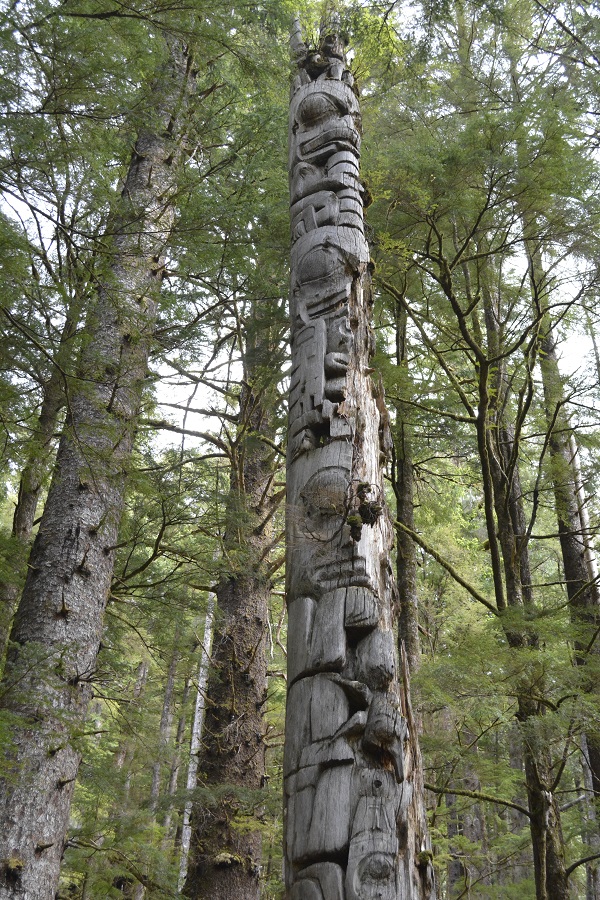
The above photos are totem poles from villages that were abandoned during the smallpox epidemic in the 1800s. No sign of the village remains except for the totem pole. They are about 150 to 200 years old and in poor condition. One day in the not-too-distant future, they will fall.
Haida totem poles were painted when they were new, but the paint is never refreshed when it wears away. The Haida believe their totem poles should not receive new paint or maintenance and be left to eventually return to the earth. However, this would not happen in the builder’s lifetime. These poles still stand more than 150 years.
I travelled around Haida Gwaii, taking photos of modern totem poles. Some were built in the last 30 years, and some are new. Click on the first photo to scroll through them.
The above is a relatively new memorial totem to a much-loved chief.
Gwaii Haanas National Park
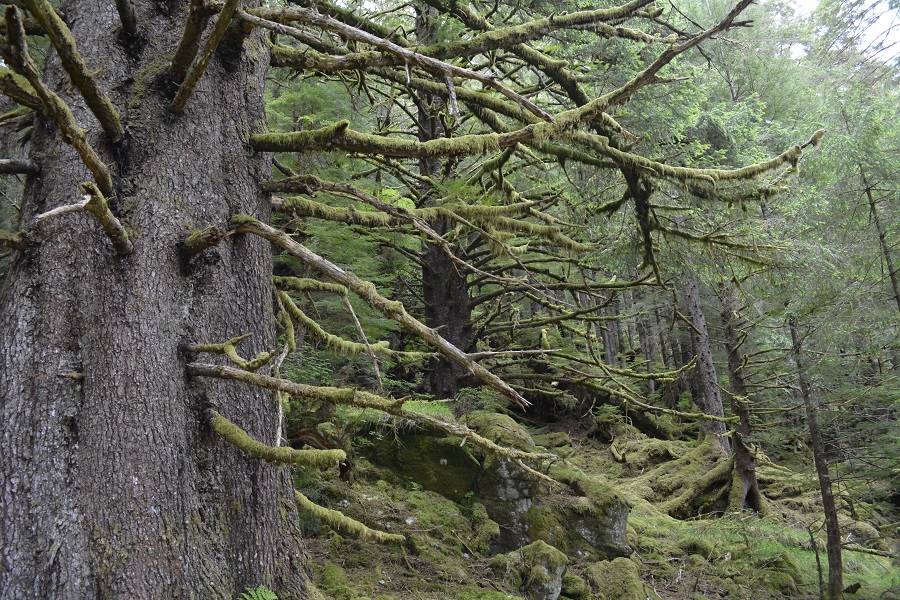
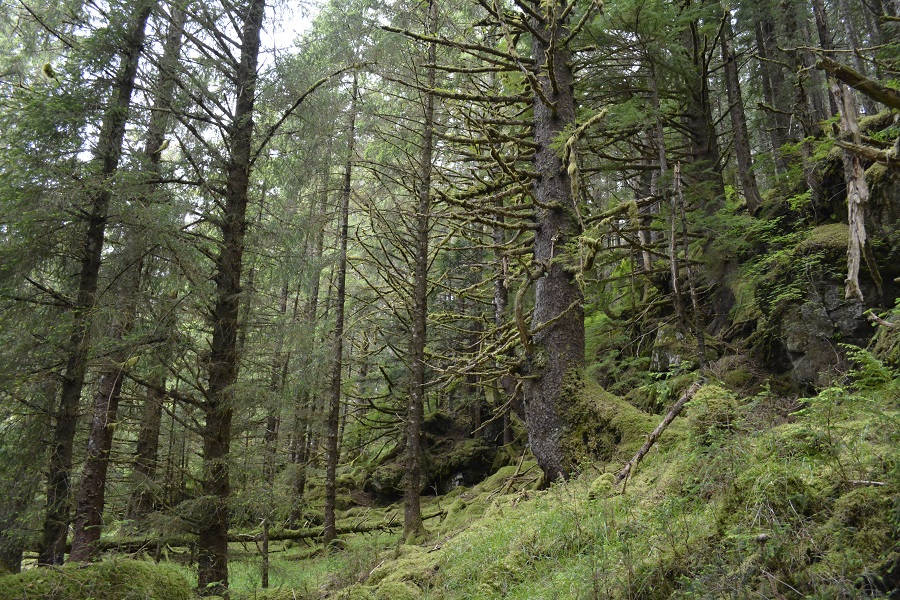
Haida Gwaii is made up of two main islands and many small ones. Graham Island is the northern one, where the people live. Morseby Island is the southern one. Most of it is a national park and a pristine northwest rainforest.
There are no roads in Gwaii Haanas, and getting there is difficult and expensive. You can take an organized tour to the south of the island. Two lodges offer overnight accommodations. Day tours along the east coast are available in rubber zodiacs. Alternatively, you can travel on your own in kayaks along the coast, camping along the way. There are several tour companies. Just search for tours in Haida Gwaii on Google.
Another option is to take a day trip through the channel between the two islands with a tour company called Haida Styles. This is an excellent tour, but it can get bumpy when you reach the open ocean on the west side. They stop at a few places to see old totem poles, and you have an excellent chance to see Humpback Whales and Steller Sea Lions. The guides are very knowledgeable about Haida culture and totem poles. A superb lunch of salmon and wild game is included, and the tour is reasonably priced.
Here is a link to their website.
The North Island and Sand Spit

Getting around Graham Island is also difficult. There is only one main road from the ferry landing at Skidegate to Masset on the north coast, and a short road leads from Skidegate to Dajing Giids.
Sand Spit is the only populated area on Moresby Island. There is a little ferry from Skidigate that will take you across. The airport is at Sand Spit.
A few dirt roads lead to very interesting and scenic places, such as Gray Bay, Tow Hill and Rennel Sound. However, these logging roads are rough, and you might meet a logging truck coming in the other direction. Also, there is no cell service except in the main populated towns.
Camping
There are a few campgrounds. Some of them are very nice, but there are no services. There is one in the forest near Tlell, one on the beach at Gray Bay, and another at Tow Hill. There is also an RV campground near Masset.
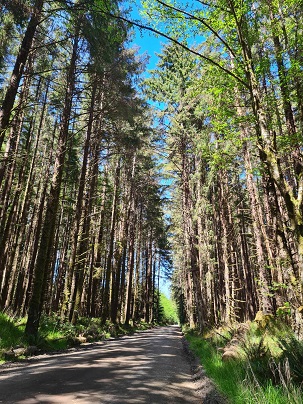
The road to Gray Bay leads to a very nice campsite on the beach. It has picnic tables but no other facilities.
Hiking
There are several excellent hiking trails. One of the best ones is along the Tlell River from the highway to the coast. The first part of the trail is rough-going over a small mountain. Then, the trail leads along the shore of the Tlell River. You might see a River Otter and some birds, such as Semipalmated Plovers and Red-breasted Sapsuckers. At the coast, there is an old shipwreck, which is very interesting,
Wildlife
Bald Eagles are the most common bird in Haida Gwaii, and you will see them everywhere. There are many species, such as puffins and other alcids, jaegers, three species of loons, and many others. However, most of the more desirable species are on the west coast of Haida Gwaii, and you will have to take a boat trip to see them. If you take a boat trip, you might see the massive Steller Sea Lion, the second largest seal after the Elephant Seal. You might also see Gray, Humpback or Orca whales.
Click on the photos to enlarge them. Look closely at the photo of the whales. There are two whales in the photo – a mother and a baby.
Tourist Attractions
There are not many tourist attractions on Haida Gwaii. The island itself and the culture of the Haida people are what tourists come to see.
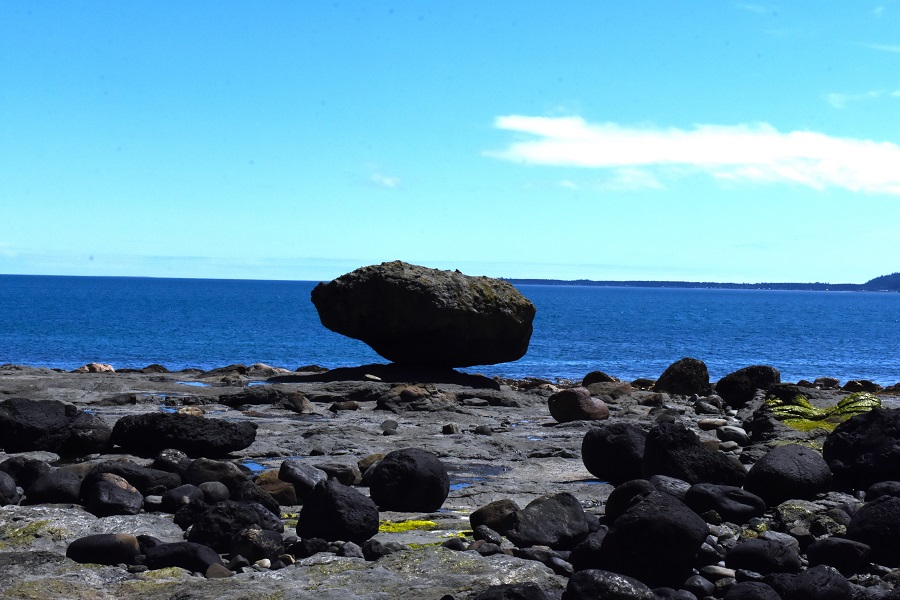
One attraction is the Balance Rock, a huge boulder that sits precariously on the beach. The Haida Museum is also good.
Haida Art
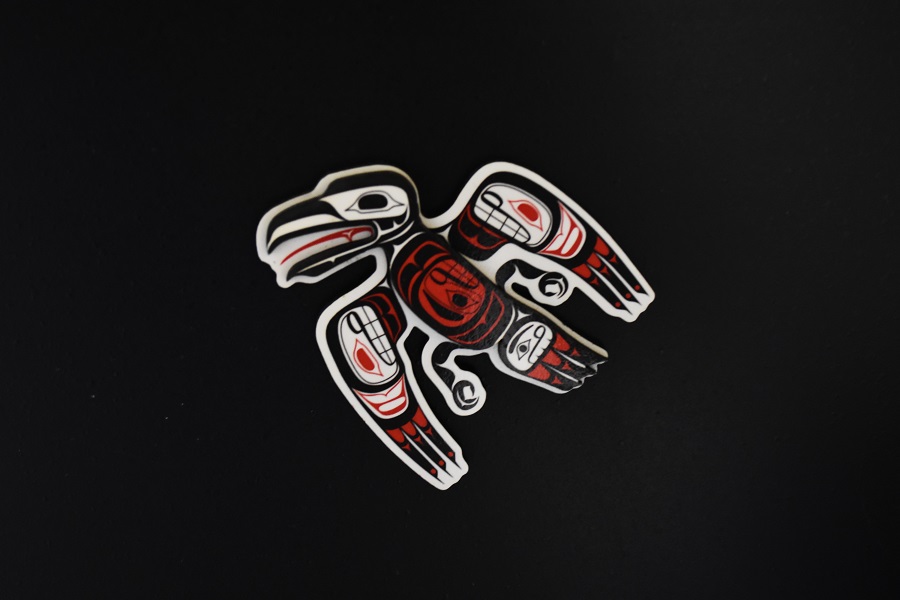
Haida Art makes a great souvenir. There is a gift shop at a museum and a lovely little shop on the beachfront road just north of Skidegate.
Do you speak Haida?


After more than 100 years of being forbidden to use their native language, the Haida language is making a comeback. There is a school at Skidegate that teaches people to speak Haida.
The photos above are of a stop sign and the items for sale in aisle five of a grocery store. It is in English on the reverse.
Islands in the Mist
The northwest coast of North America is covered in a rainforest. You can expect a lot of rain in a rainforest, especially from October to April. But even in June, you could experience a week of rainy days. This does not mean it will rain hard all day, only that there will be some rain, especially in the morning. Haida Gwaii receives an average of 55 mm (1,407 inches) of precipitation annually.
This is a temperate rainforest as opposed to a tropical rainforest. The difference is the type of trees and the temperature and humidity. South American rainforests are hot and humid much of the year. North American rainforest consists mainly of very tall coniferous trees with cool temperatures. There are many differences, but what they have in common is that both receive a lot of rain.
So, bring a raincoat. But don’t let this deter you from visiting. There are still many sunny days in summer. When it rains, it is usually relatively light and does not last too long.
Summary
Travelling to Haida Gwaii is difficult and expensive, and the weather is not the best. However, it is a fascinating place to visit. Learning about the culture of the Haida people and exploring the forest for 200-year-old abandoned totem poles is enlightening and adventurous. It is well worth the trip.
There are many uncommon bird species, but they are primarily in difficult areas to access on the west coast.
You can take organized boat or zodiac tours. Many people explore the coast of Gwaii Haanas by kayak.
If you enjoy exploring off-the-beaten-path places, you should definitely visit Haida Gwaii.

